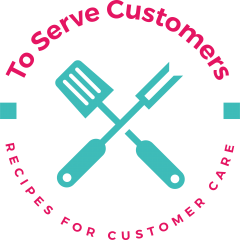A few weeks ago, someone asked me how I design customer care systems from the bottom up, and it really got me thinking. Most of the time, even when I’m coming in on the ground floor, someone somewhere has some idea that customers require specific assistance. This means that it’s pretty easy to identify the high level pain points, and (hopefully), there will be a pretty good customer profile available, too.

Those two things are where I start: I find out where the customers hurt, and by looking at who the customers are, figure out the best way to ease that pain. Sounds easy, right? Here’s the thing: the more problems you solve, the more you will find. This isn’t a bad thing. This is where you get to refine the experience you’re offering your customers.

Ideally, designing customer care processes will follow a linear progression:
- Identify the pain point
- Create a short-term fix that works for your particular customer
- Work with other departments to actually solve the problem
For example, let’s say people are having trouble signing in to your web site. That’s your pain point. Your short term fix might be writing a detailed step-by-step guide that will walk your customer through the process, especially if your customer isn’t very familiar with create logins for websites. But that’s not a great long-term fix — that hasn’t solved the problem, just slapped a band-aid on it.

Your next step is to work with the UI people and create a sign in process that doesn’t cause the customer pain. Solving the problem is your end game — customer care is all about making sure the customer is cared for throughout the company. Remember, you are the customer’s voice within the company.
Relieving pain points may take several iterations, and some things you try might not make the process better (or might even make it worse!). Don’t be afraid to make the changes you need to make to provide great customer care. And don’t get frustrated when new pain points rear their heads. It is completely normal — expected, even — that as you solve the bigger problems, you’ll start seeing the smaller problems.

Going back to our example above, let’s say you’ve solved the sign-in problem. Now, suddenly, you’re inundated with complaints from customers that they’re having trouble finding a particular type of product or piece of information on your site. You haven’t changed the site…why weren’t you hearing about this before?

Well, first, you probably were, you just didn’t notice it because this complaint was drowned out by the people who couldn’t get signed in. But also, now you’ve got a bunch more people who are signed in and eager to use your site. So now, this is the problem you need to solve.
This cycle will continue to happen — don’t panic! The more your refine your systems, the easier and faster steps 2 and 3 will be to implement. Plus, barring a huge relaunch or something like that, the problems will get smaller and smaller. Even if/when you have a relaunch or introduce a new process to your customers, now that you’ve developed your systems, it will be relatively painless to handle the problem solving.

What will your system look like? I can’t answer that…it’s going to be tailored to the needs of your customer and your company. The systems I built for dealing with parents purchasing tutoring services for their kids are vastly different from the ones I’ve built for dealing with retail customers. And even within those systems, there are different components for handling bargain shoppers vs. those who require white-glove service. I deal with issues that require Marketing to make changes differently from those that require tech changes.
You should always be refining these systems to make them as efficient and tailored as possible. Don’t get so attached to your systems that you stop making them better. These are tools for different jobs. If you’re tempted to try to use the same system for everything, try to remember the old chestnut about everything looking like a nail when all you have is a hammer. You should have an entire tool chest at your disposal if you want to provide really great customer care.



